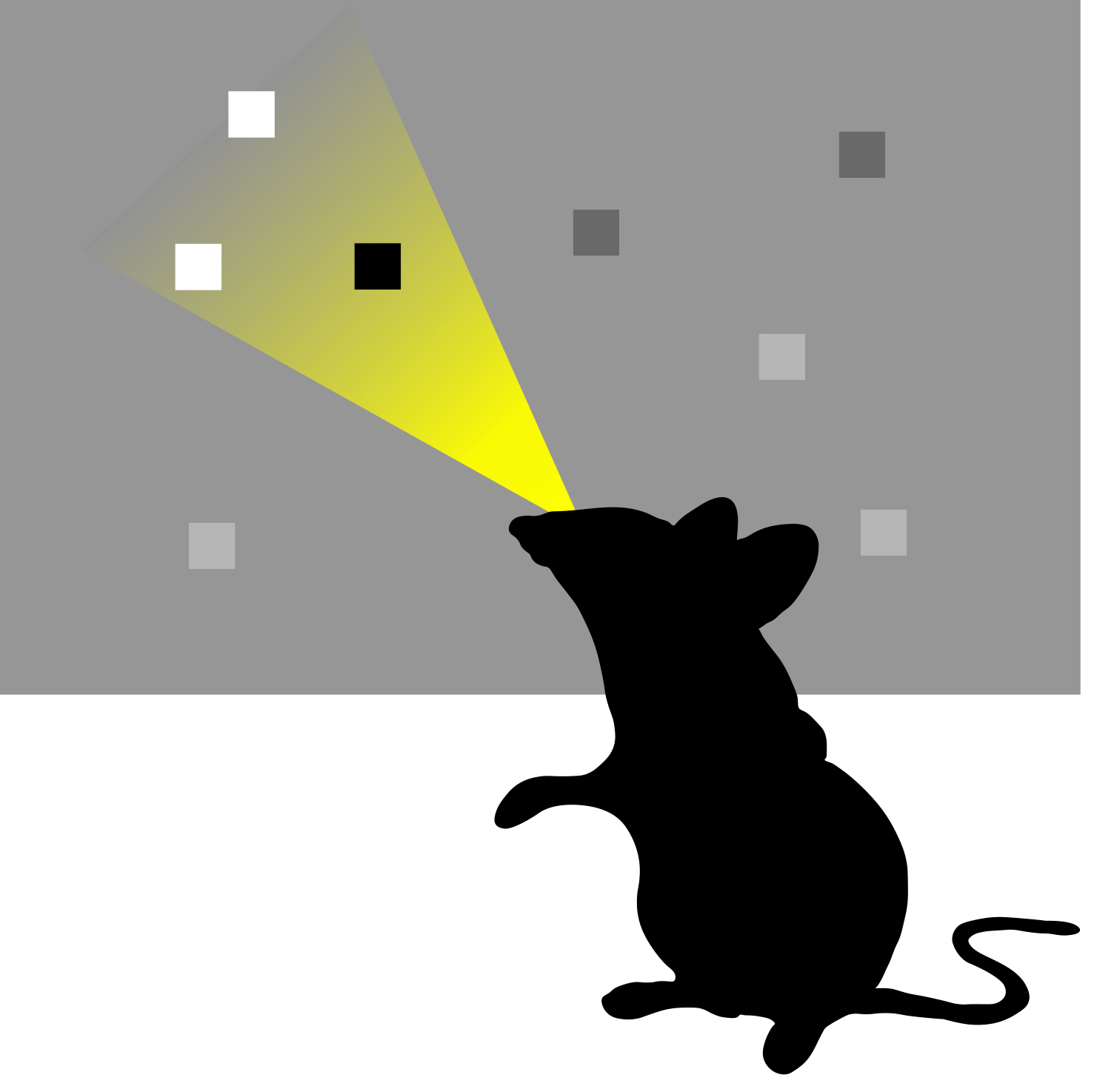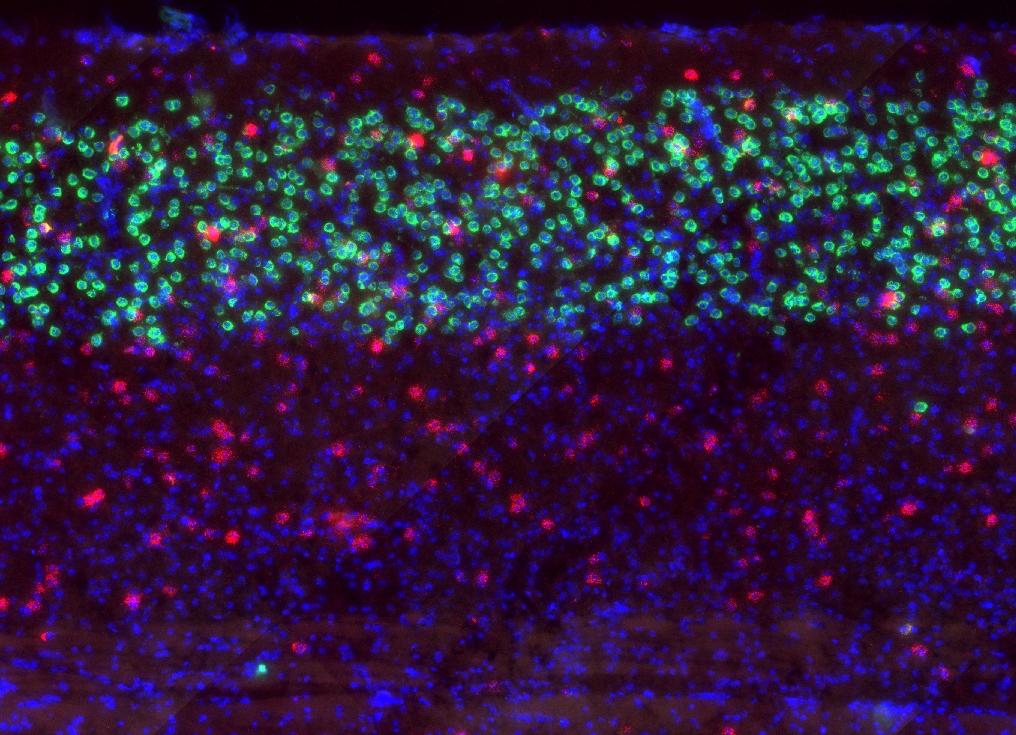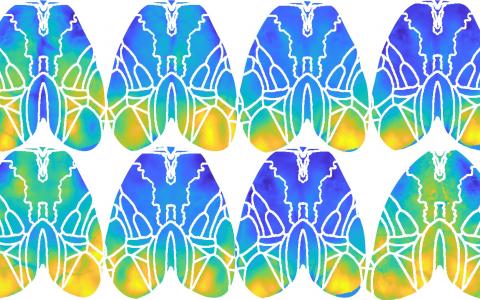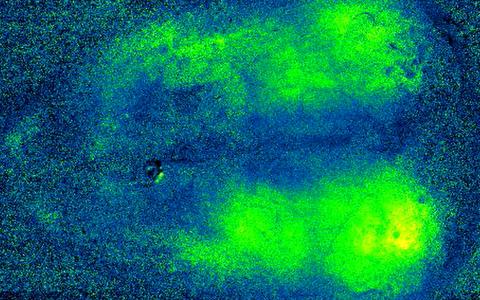
Attention and running influence individual brain cells independently
New study finds individual neurons in the visual cortex in mice are modulated separately by two different brain states
When you are not paying attention, performance drops. For example, you are four times more likely to be in a crash if you use your phone while driving.1 We know differences in brain states, such as variations in attention, can influence sensory processing, but how do these states influence individual brain cells?
Neuroscientists at the Sainsbury Wellcome Centre at UCL explored how individual neurons in mice are influenced by two different cognitive and behavioural states – attention and running. These two states were once thought to share a common mechanism. However, in a new study published today in Neuron, SWC researchers found that spatial attention and running influence individual neurons independently with different dynamics.
“Previous studies in mice and primates have shown that spatial attention and running have very similar effects on sensory processing. When a mouse is running or when a primate is paying attention to a specific location, there is an increase in the sensory responses of neurons in the visual cortex. However, it wasn’t known how these states interact to modulate responses of individual neurons as there was no experimental paradigm that could address this question in the same animal,” said Takahiro Kanamori, Senior Research Fellow in the Mrsic-Flogel lab at SWC and first author on the paper.

A mouse directing spatial attention. © Sainsbury Wellcome Centre
To solve this problem, Kanamori and Mrsic-Flogel designed a behavioural task where mice had to pay attention to one of two locations on a computer monitor and discriminate the orientation of grating stimuli to gain a reward. The location could change within a session to induce a change in attentional state and in all trials, mice could choose whether to run or sit still, which allowed the neuroscientists to compare the influence of spatial attention and running on neural responses. Kanamori recorded from excitatory neurons in layer 2/3 of the primary visual cortex, as these neurons have previously been shown to respond more when mice are running and during spatial attention tasks in primate studies.
“We found that attention and running are imposed on individual neurons independently. It makes sense to separate these signals, as attention is expected to improve visual processing even when the animals do not run. And while they run, they might shift their visual attention to different locations in the environment without interference from the influence of running.” said Tom Mrsic-Flogel, SWC Director and lead author of the study.
The team also tracked how individual neurons are modulated by spatial attention or running across days. They found that modulation by running is quite stable even across days, whereas modulation by spatial attention is very dynamic and not reliable across days or even within a single day. The next steps for the researchers are to understand at the molecular level the mechanisms by which these distinct response modulations can happen.

Brain slice showing the calcium indicator GCaMP6f (green) expressed in upper layers in the visual cortex. Red is inhibitory neurons and blue shows all cells' nuclei. © Sainsbury Wellcome Centre
This research was funded by post-doctoral fellowships from Uehara Memorial Foundation and Kanae Foundation and the Sainsbury Wellcome Centre Core Grant from the Gatsby Charity Foundation (GAT3755) and Wellcome (219627/Z/19/Z).
Source:
Read the full paper in Neuron: ‘Independent response modulation of visual cortical neurons by attentional and behavioural states’
Reference
- The THINK! campaign, Department for Transport, UK https://www.think.gov.uk/themes/mobile-phones/
Media contact:
For more information or to speak to the researchers involved, please contact:
- April Cashin-Garbutt
Head of Research Communications and Engagement, Sainsbury Wellcome Centre
E: a.cashin-garbutt@ucl.ac.uk T: +44 (0)20 3108 8028
About the Sainsbury Wellcome Centre
The Sainsbury Wellcome Centre (SWC) brings together world-leading neuroscientists to generate theories about how neural circuits in the brain give rise to the fundamental processes underpinning behaviour, including perception, memory, expectation, decisions, cognition, volition and action. Funded by the Gatsby Charitable Foundation and Wellcome, SWC is located within UCL and is closely associated with the Faculties of Life Sciences and Brain Sciences.

